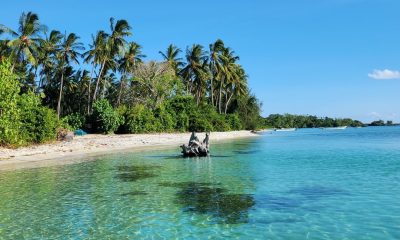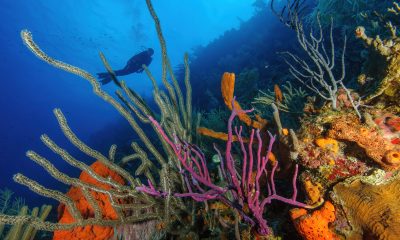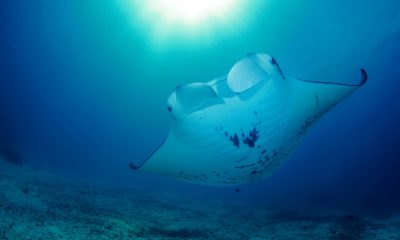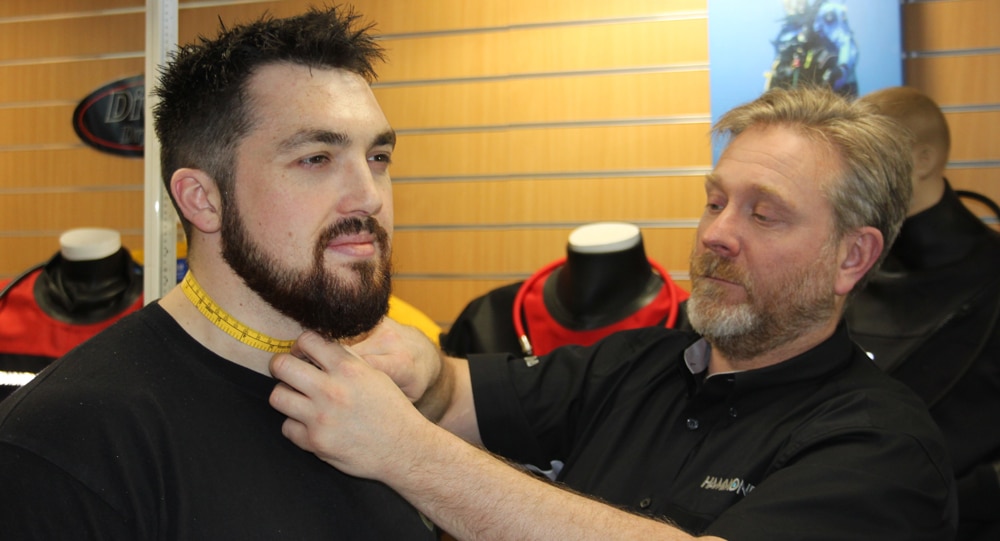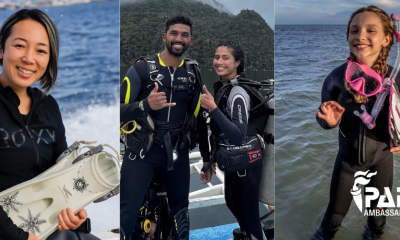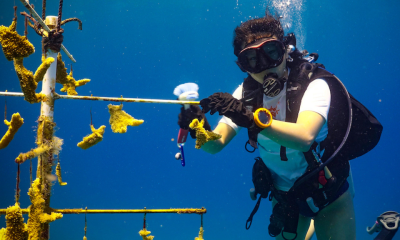News
New species of deep-sea corals discovered in Atlantic Marine Monument
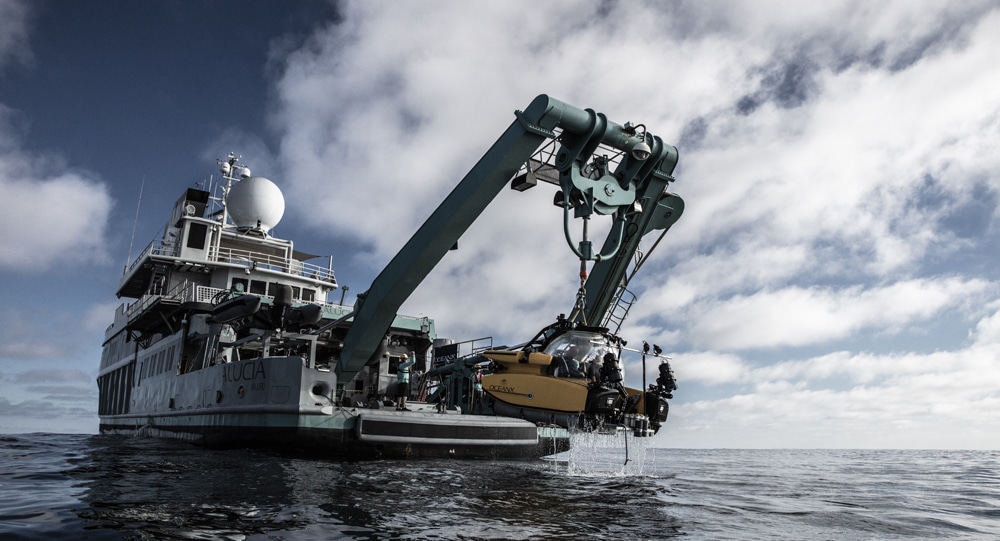
DNA analysis recently confirmed that Woods Hole Oceanographic Institution (WHOI) scientists and their collaborators at OceanX, the University of Connecticut (UConn), and NASA’s Jet Propulsion Laboratory (JPL) discovered two new species of deep-sea corals during a September 2018 expedition in the Northeast Canyons and Seamounts National Monument, located about 100 miles from the Northeast U.S. coast.
The research team was led by deep-sea biologist Tim Shank of WHOI and included co-PIs Taylor Heyl (WHOI), Rachel O’Neill (UConn), and John Leichty (JPL). Utilizing OceanX’s research and exploration vessel Alucia, the team explored and surveyed several of the unique deep-sea habitats in the monument, which includes three underwater canyons deeper than the Grand Canyon.
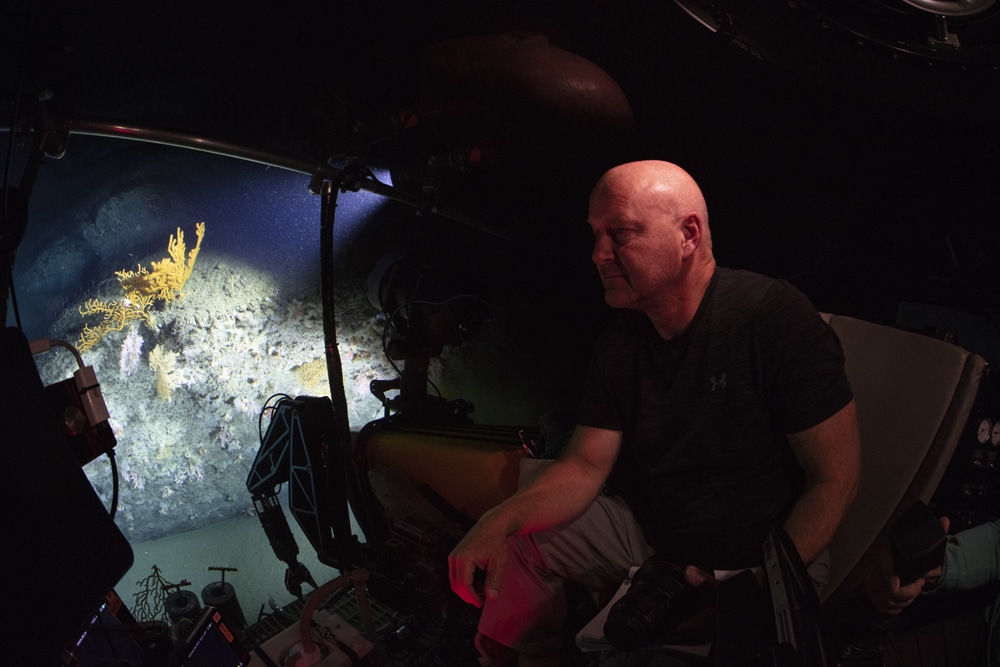
WHOI deep-sea biologist Tim Shank in the OceanX submersible Nadir diving in Lydonia Canyon. (Photo by Luis Lamar, National Geographic)
During the two-week expedition, the scientists collected a total of 29 coral samples in Lydonia Canyon at depths between 369 meters (1,211 feet) and 903 meters (2,963 feet) using the submarine Nadir. These were the first human-occupied submersible dives in this canyon since 1982 and only the third deep-submergence mission to Lydonia Canyon.
“Through ongoing genetic barcoding, we have identified at least two corals so far that represent genetically different species,” Shank said. “They don’t show sufficient genetic similarity to be any species that is currently known in the world’s repository for DNA sequences.”
According to Heyl, the two likely new species found in Lydonia Canyon are bubblegum corals, which she described as soft, deep-water corals, “with bundles of polyps that resemble wads of bubblegum along their branches.”
“We didn’t expect to find bubblegum corals there at all, since they haven’t been found in any of the neighboring canyons,” Shank said. “We found pink, red, and white bubblegum corals thriving there.”
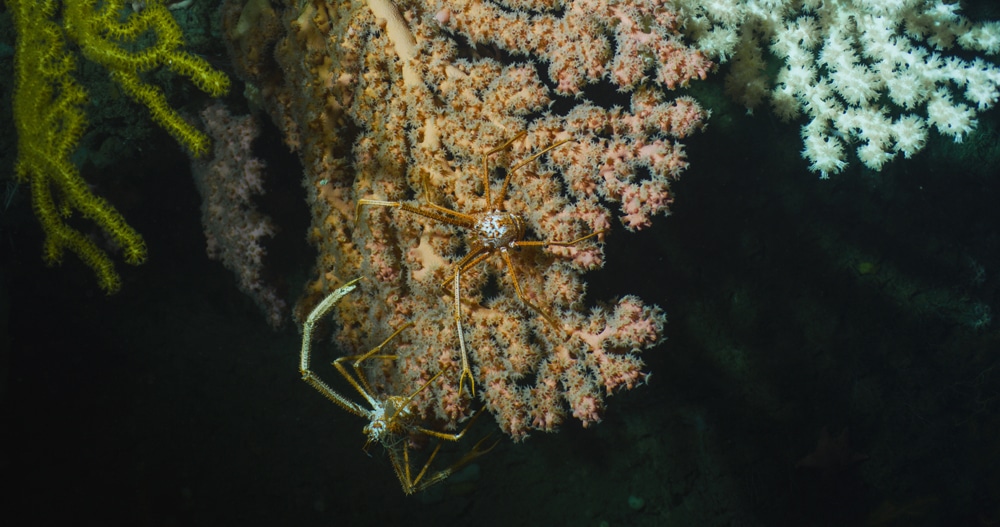
A bubblegum coral (Paragorgia spp.) similar to, but distinct from, the new species identified in Lydonia Canyon. (Photo by Ivan Agerton, OceanX.)
“We observed a high diversity of other corals—at least 24 species—on the seafloor and are discovering more through genetic analyses,” he added.
Shank noted that coral species deep in the canyon at more than 900 meters (2,953 feet) below the surface were very different from those found in shallower waters. In total, the team collected some 200 samples of corals, sponges, and other marine life during the expedition’s three submersible dives.
“We’re still analyzing the data,” he noted. “But we found surprising patterns of species diversity at different depths and among the different canyons in the monument.”
Corals found at these depths grow at an extremely slow pace: One that is a foot tall could be as much as 500 years old. Deep-water corals around the world also provide the framework to support entire ecosystems that contain more than 2,500 species living on and around them, including brittle stars, squat lobster crabs, and sea lily crinoids.
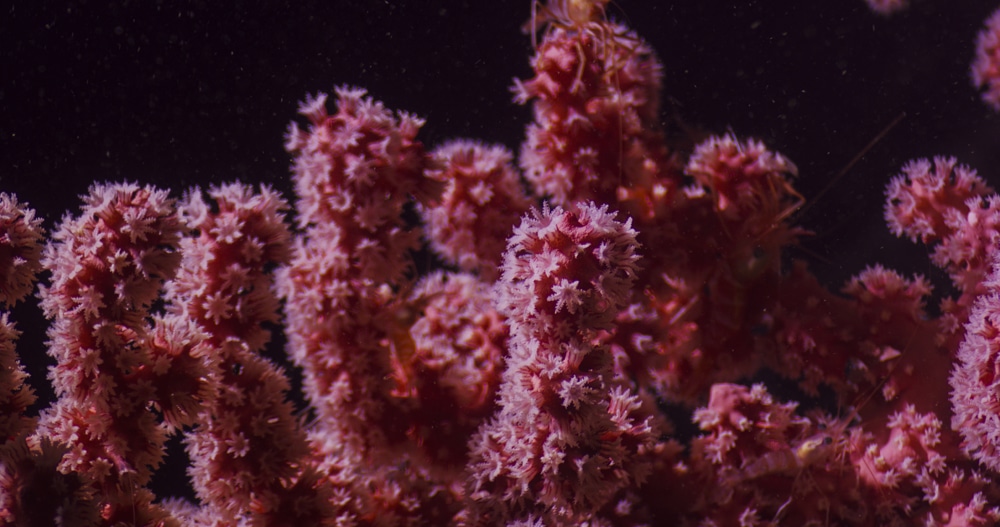
A bubblegum coral (Paragorgia spp.) similar to, but distinct from, the new species identified in Lydonia Canyon. (Photo by Ivan Agerton, OceanX.)
In addition, the team tested a new universal barcode for invertebrates during the expedition. Barcoding is a technique that uses a specific segment of an organism’s DNA to identify different species at the genetic level, rather than by analyzing an organisms physical characteristics. UConn’s O’Neill and her team were able to validate the effectiveness of the new barcode by distinguishing all of the different salp species present in a single, commingled sample. Salps are a gelatinous, free-swimming animal common to the open ocean that may play an important role in Earth’s climate system by consuming carbon near the surface and excreting it in pellets that sink into the deep ocean.
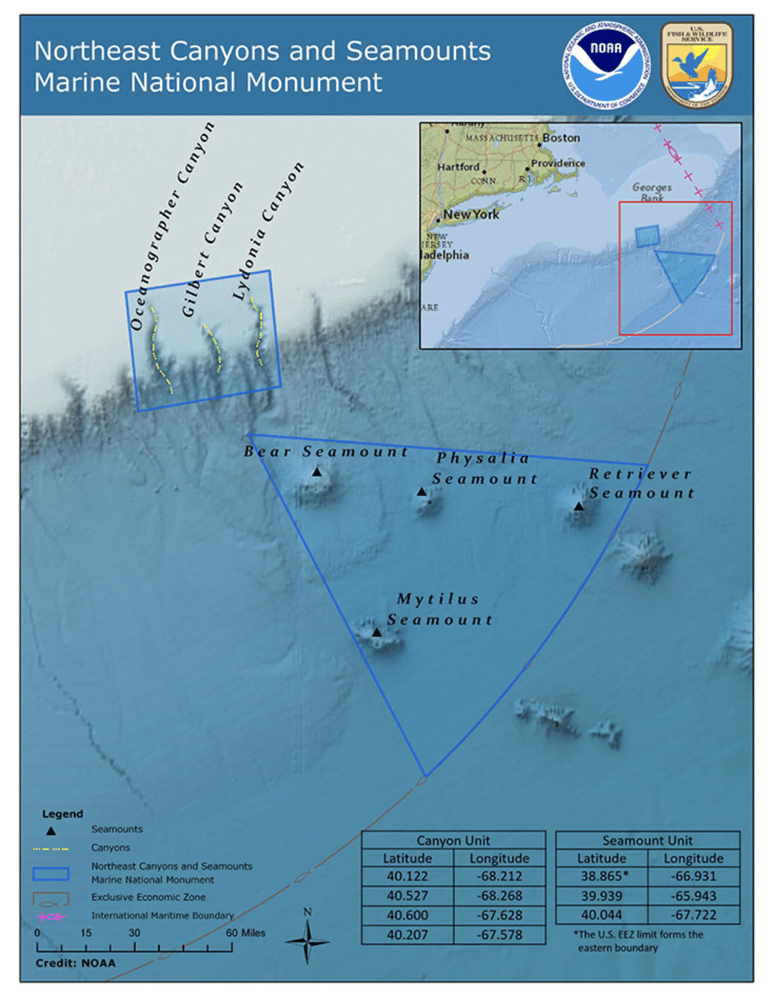
The Northeast Canyons and Seamounts National Monument covers approximately 4,913 square miles (12,724 square kilometers), is located about 130 miles east-southeast of Cape Cod, and includes two distinct areas: one that covers three canyons and one that covers four seamounts. (Map courtesy of NOAA)
The monument was created by President Barack Obama in 2016 and is the first and only national marine monument in the Atlantic Ocean. However, it is currently under threat of losing its protected status.
“The Northeast Canyons represent some of the most unique and biodiverse habitats in the Atlantic Ocean, and exploring and understanding these canyons is critical to creating awareness for and protecting them,” said Vincent Pieribone, Vice Chairman, OceanX. “We are thrilled to learn with our partners at WHOI, JPL, UConn and Bloomberg Philanthropies that this mission uncovered new species of coral. These discoveries will help move us toward a better understanding of our oceans, our planet’s most important and most under-examined natural resource.”
The expedition was made possible through the Bloomberg-OceanX partnership and pledge of a combined $185 million over the next four years to facilitate ocean exploration and conservation around the world. Through the partnership, Bloomberg Philanthropies and OceanX aim to create a critical platform to increase the world’s collective understanding of and engagement in our oceans.
Find out more at www.whoi.edu.
News
Dive Worldwide Announces Bite-Back as its Charity of the Year

Over the next 12 months, specialist scuba holiday company Dive Worldwide will be supporting Bite-Back Shark & Marine Conservation with donations collected from client bookings to any one of its stunning dive destinations around the world. The independently-owned operator expects to raise £3000 for the UK charity.
Manager at Dive Worldwide, Phil North, said: “We’re especially excited to work with Bite-Back and support its intelligent, creative and results-driven campaigns to end the UK trade in shark products and prompt a change in attitudes to the ocean’s most maligned inhabitant.”
Bite-Back is running campaigns to hold the media to account on the way it reports shark news along with a brand new nationwide education programme. Last year the charity was credited for spearheading a UK ban on the import and export of shark fins.
Campaign director at Bite-Back, Graham Buckingham, said: “We’re enormously grateful to Dive Worldwide for choosing to support Bite-Back. The company’s commitment to conservation helps set it apart from other tour operators and we’re certain its clients admire and respect that policy. For us, the affiliation is huge and helps us look to the future with confidence we can deliver against key conservation programmes.”
To launch the fundraising initiative, Phil North presented Graham Buckingham with a cheque for £1,000.
Visit Dive Worldwide to discover its diverse range of international scuba adventures and visit Bite-Back to learn more about the charity’s campaigns.
MORE INFORMATION
Call Graham Buckingham on 07810 454 266 or email graham@bite-back.com
Gear News
Scubapro Free Octopus Promotion 2024

Free Octopus with every purchase of a SCUBAPRO regulator system
Just in time for the spring season, divers can save money with the FREE OCTOPUS SPRING PROMOTION! Until July 31st SCUBAPRO offers an Octopus for free
with every purchase of a regulator system!
Get a free S270 OCTOPUS with purchase of these combinations:
MK25 EVO or MK19 EVO with A700
MK25 EVO or MK19 EVO with S620Ti
MK25 EVO or MK19 EVO with D420
MK25 EVO Din mit S620Ti-X
Get a free R105 OCTOPUS with purchase of the following combinations:
MK25 EVO or MK19 EVO with G260
MK25 EVO or MK17 EVO with S600
SCUBAPRO offers a 30-year first owner warranty on all regulators, with a revision period of two years or 100 dives. All SCUBAPRO regulators are of course certified according to the new European test standard EN250-2014.
Available at participating SCUBAPRO dealers. Promotion may not be available in all regions. Find an authorized SCUBAPRO Dealer at scubapro.com.
More information available on www.scubapro.com.
-
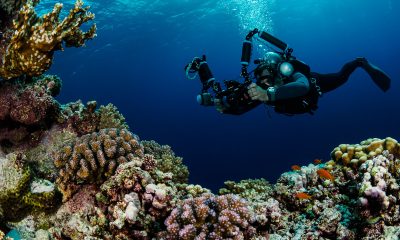
 News3 months ago
News3 months agoHone your underwater photography skills with Alphamarine Photography at Red Sea Diving Safari in March
-
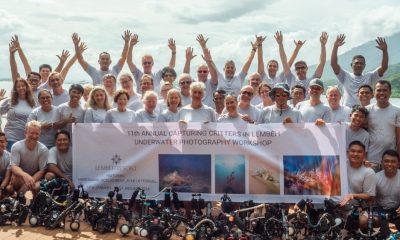
 News3 months ago
News3 months agoCapturing Critters in Lembeh Underwater Photography Workshop 2024: Event Roundup
-
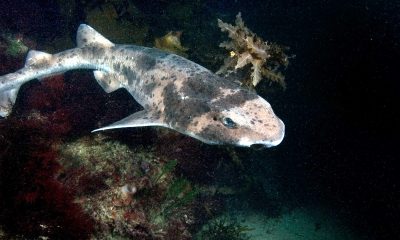
 Marine Life & Conservation Blogs3 months ago
Marine Life & Conservation Blogs3 months agoCreature Feature: Swell Sharks
-
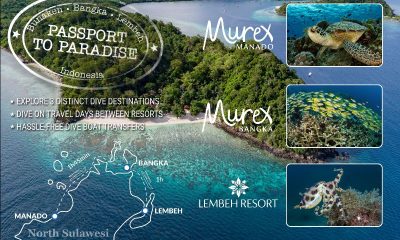
 Blogs2 months ago
Blogs2 months agoMurex Resorts: Passport to Paradise!
-
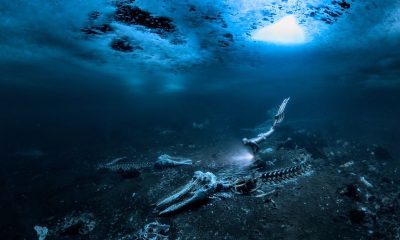
 Blogs2 months ago
Blogs2 months agoDiver Discovering Whale Skeletons Beneath Ice Judged World’s Best Underwater Photograph
-
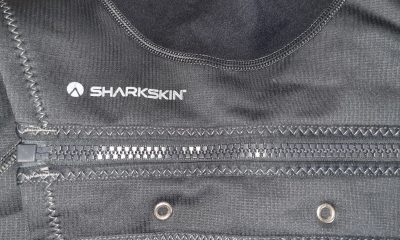
 Gear Reviews2 weeks ago
Gear Reviews2 weeks agoGEAR REVIEW – Revolutionising Diving Comfort: The Sharkskin T2 Chillproof Suit
-
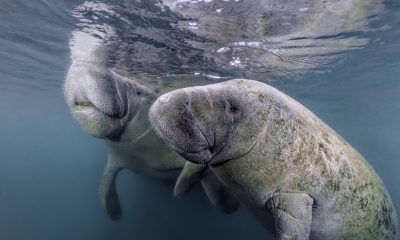
 Marine Life & Conservation2 months ago
Marine Life & Conservation2 months agoSave the Manatee Club launches brand new webcams at Silver Springs State Park, Florida
-

 Gear Reviews3 months ago
Gear Reviews3 months agoGear Review: Oceanic+ Dive Housing for iPhone



